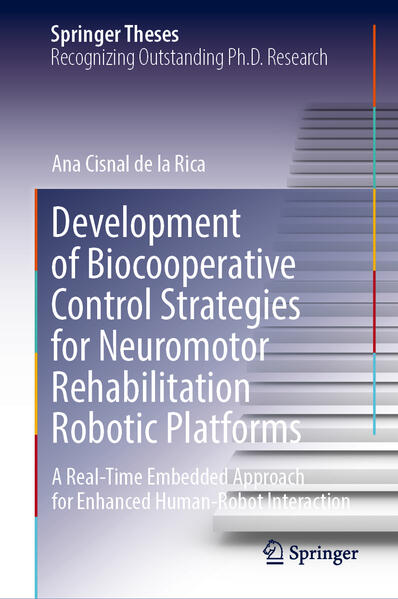
Zustellung: Mo, 29.09. - Mi, 01.10.
Noch nicht erschienen
VersandkostenfreiBestellen & in Filiale abholen:
This book presents the development of a multimodal physiological signal acquisition system and cooperative control strategies for applications in upper-limb robotic rehabilitation. First, it introduces a non-pattern recognition EMG-based platform for hand rehabilitation, demonstrating its strong performance in both gesture recognition accuracy and responsiveness. It also discusses the role of EMG-based visual feedback, showing how real-time visualization of muscle activation enhances user performance during training. In turn, it reports on the validation of a low-cost multimodal acquisition solution using two different real-time biocooperative control strategies. The results demonstrate that the developed low-cost wearable platform, which integrates multiple sensors, wireless communication, and a high-efficiency real-time microcontroller, is highly versatile and configurable, and shows a good signal quality. By addressing two main aspects that limit the adoption of biocooperative systems in clinical rehabilitation settings hardware affordability and system reliability this outstanding PhD thesis paves the way to the implementation of real-time biocooperative controls for future applications in robotic rehabilitation.
Inhaltsverzeichnis
Introduction. - Hypotheses and Objectives. - Materials and methods. - Results.
Produktdetails
Erscheinungsdatum
29. September 2025
Sprache
englisch
Seitenanzahl
135
Reihe
Springer Theses
Autor/Autorin
Ana Cisnal de la Rica
Verlag/Hersteller
Produktart
gebunden
Abbildungen
V, 135 p.
ISBN
9783032024848
Entdecken Sie mehr
Bewertungen
0 Bewertungen
Es wurden noch keine Bewertungen abgegeben. Schreiben Sie die erste Bewertung zu "Development of Biocooperative Control Strategies for Neuromotor Rehabilitation Robotic Platforms" und helfen Sie damit anderen bei der Kaufentscheidung.









